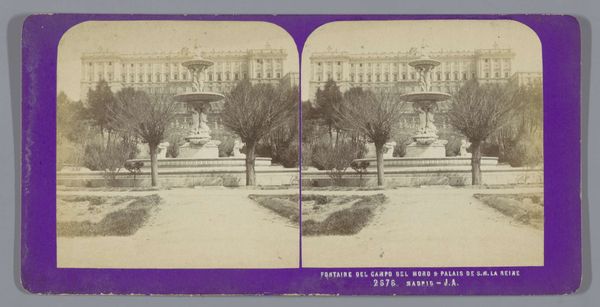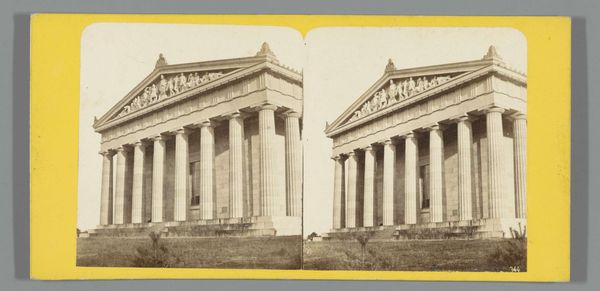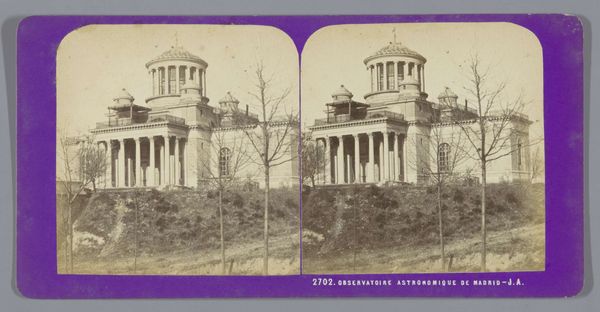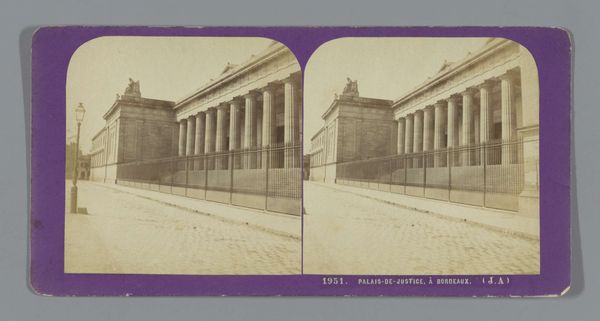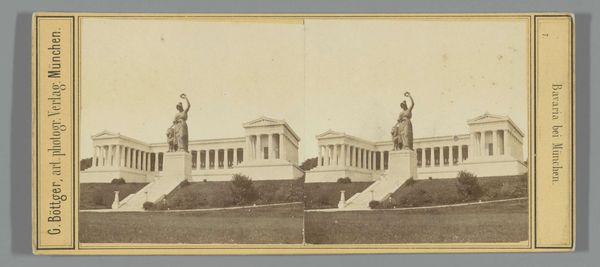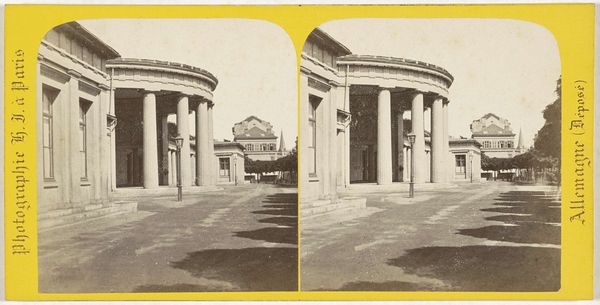
Dimensions: height 85 mm, width 170 mm
Copyright: Rijks Museum: Open Domain
Jean Andrieu created this stereoscopic photograph of the Museo Nacional del Prado in Madrid using photography, a relatively new medium for its time. The magic of stereoscopic images lies in their production, requiring careful alignment of two nearly identical photographs to mimic human binocular vision, creating an illusion of depth. This method, popular in the 19th century, democratized access to distant places and experiences, bringing the world to people's homes in a tangible form. Photography, unlike painting or sculpture, relied heavily on technological advancements and industrial processes. The production of photographic materials and equipment spurred new industries, creating new opportunities for labor and consumption. Andrieu’s choice of subject, the Museo del Prado, further highlights the intersection of art, industry, and cultural institutions. By embracing photography, Andrieu challenged traditional notions of art, blurring the lines between representation, documentation, and mass production. The photograph is a testament to the power of materials and processes to shape our understanding of art and its role in society.
Comments
No comments
Be the first to comment and join the conversation on the ultimate creative platform.


